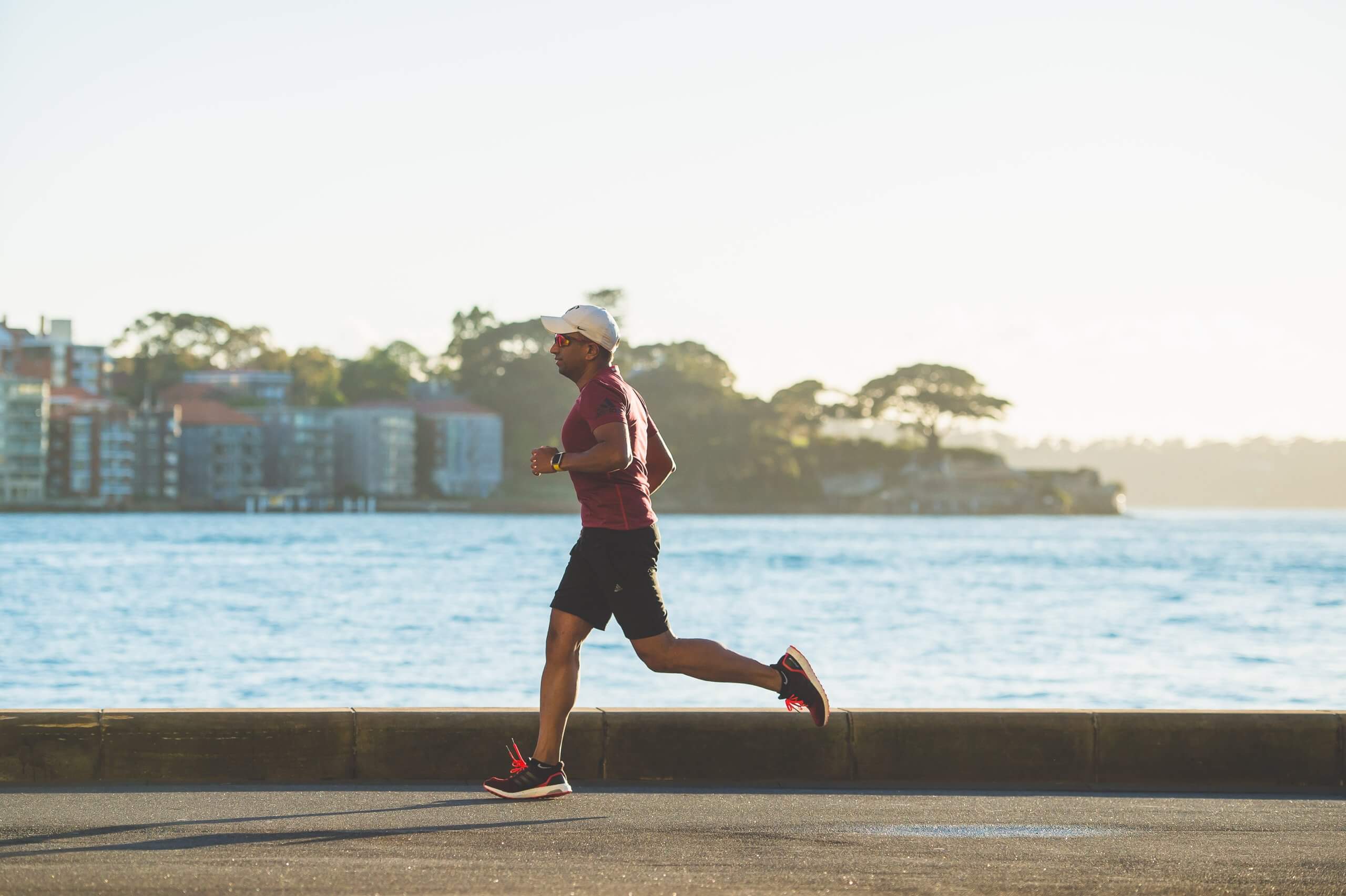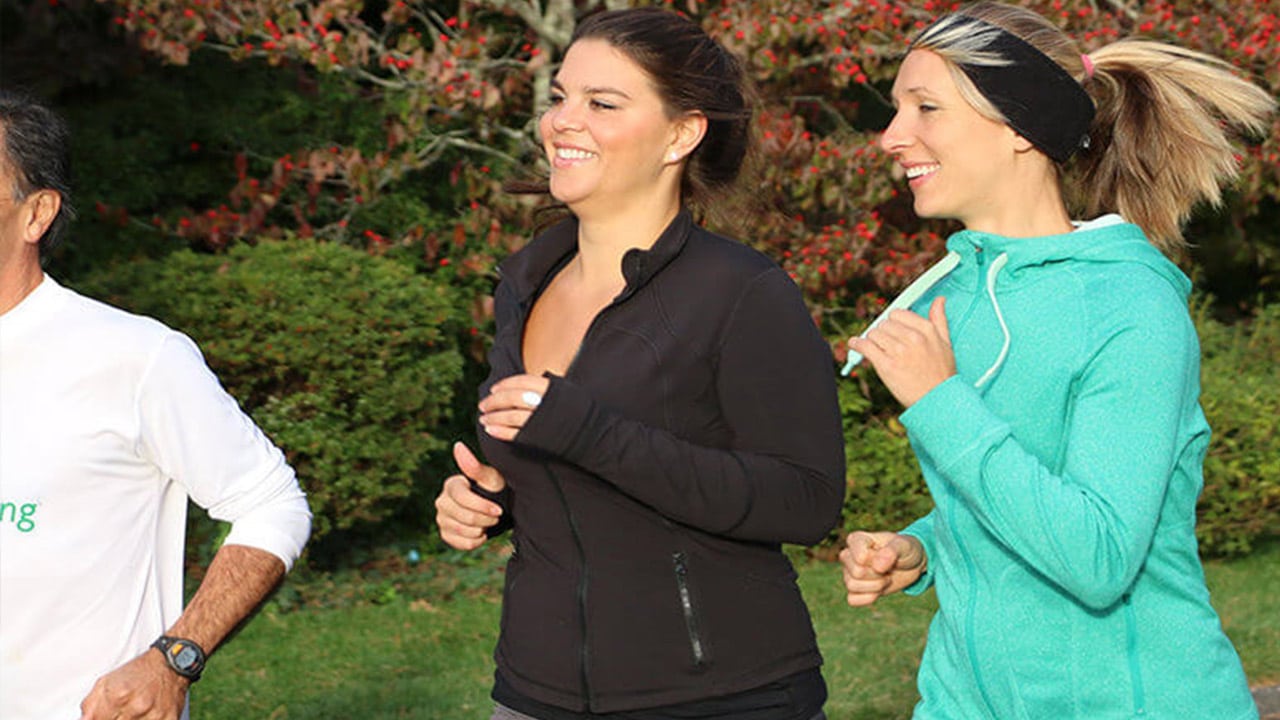I remember when I started my first running program as an adult. I wanted to get more fit and running seemed like the quickest and cheapest way to get there. Like most people, I thought I could just head out on a run and somehow my body would know what to do. But as I took off, I distinctly remember saying to myself, “I don’t know what to do with my arms!” They were swinging, but I was clueless about whether I was swinging them too much or too little; whether I was bending my elbows enough; how to hold my hands. It felt like I was having a disembodiment episode with my arms.
Now, after studying body movement for the past thirty years, I’ve come to the conclusion that our arms are actually much more important to our walking and running than our legs. Almost every movement in my lower body is either controlled, driven, enhanced, or balanced by the motion of my arms. Sounds crazy, but here are some of the things I’ve discovered.

As above… so below
A NASA scientist once told me that any part of a machine that is not moving optimally puts a drag on the efficiency of the entire machine. It’s called inertia. Then, the good-working parts have to work harder (or less efficiently) as a result of this drag.
Your arms are no different. When you hold tension in your shoulders, your arms don’t swing as easy and relaxed as they could. You subsequently burn more fuel, get tired more quickly, and tend to move more slowly because your legs have to work harder to make up for all that tension upstairs. So, if you learn to relax your shoulders and allow your arms to swing freely and easily, your legs won’t have to work as hard to hold the same speed.
Balance of Power: For every action, there’s an equal and opposite reaction
When you want to go faster, all of that drive comes from your arms and torso, which is used to drive your legs rearward. Look at the picture of sprinters at the starting line, and notice how muscular their arms are. That’s because of all the forward force that’s needed to drive their legs rearward with speed and power. Try to run fast without using your arms and you’ll quickly see what I’m talking about.
More things your arms do
- They stabilize your body during movement. I notice especially when I’m running on trails, which requires lots of quick lateral adjustments.
- They work to keep you balanced over your feet, whether you’re going uphill, downhill, or on uneven terrain.
- For engaging the almost limitless power of the obliques to drive the hips and legs (that’s another whole discussion)
- A good arm swing allows your stride to have a better range of motion with less vertical bounce.
- They help you keep a steady and rhythmical connection with your breath and your feet.

Try these Arm Exercises
Exercise A

The next time you’re walking outdoors, make yourself aware of where your hands are. If you’re just out on a leisurely stroll they’re probably swinging at your sides where they should be. It’s relaxing!
But, if you want to walk faster, more in a mode of fitness walking, hold your hands a bit higher as you swing your arms. Don’t pump your arms, just bend them at the elbow by holding your hands at rib-height and notice the difference this small adjustment makes in your stride. You should feel your legs swinging much more easily and with a slightly faster step. Your impact with the ground will soften and your hips won’t feel as much of a jolt as your feet swing forward to hit the ground.
If you can feel the difference this makes in your walking, just think of how big of an impact it would have on your running. Try exaggerating the swing of your arms by swinging your elbows more rearward than usual. Balance this rearward arm swing with a slight forward fall and feel your legs swinging easily, landing in a softer footfall with a quicker, more efficient cadence. Instead of “pounding the pavement” you’ll find yourself gliding across the surface of the earth.
Exercise B
Another use for your arms is to sync your movement with your breathing. As you walk (or run) swing your arms to a rhythm that goes: 1-2…1-2-3…1-2…1-2-3 and so on. As you count out these numbers with every step you take, exhale during the 1-2 count, and inhale during the 1-2-3 count. Start by getting used to walking to this rhythm, sync your breath to your steps, by breathing out through your lips for 2 counts and in through your nose for 3 counts. Once you feel comfortable using this rhythm, bring it into your running.
If you’re just out for a casual stroll, there’s no need to sync your breath with your stride. But, as you move into fitness walking, or running, it makes quicker movement much easier.
No machine works as well as it could without the cooperation of all of its parts. Don’t make the mistake of thinking your arms are just along for the ride. Tap into the potential of your arms and they’ll quickly become your best ally.


